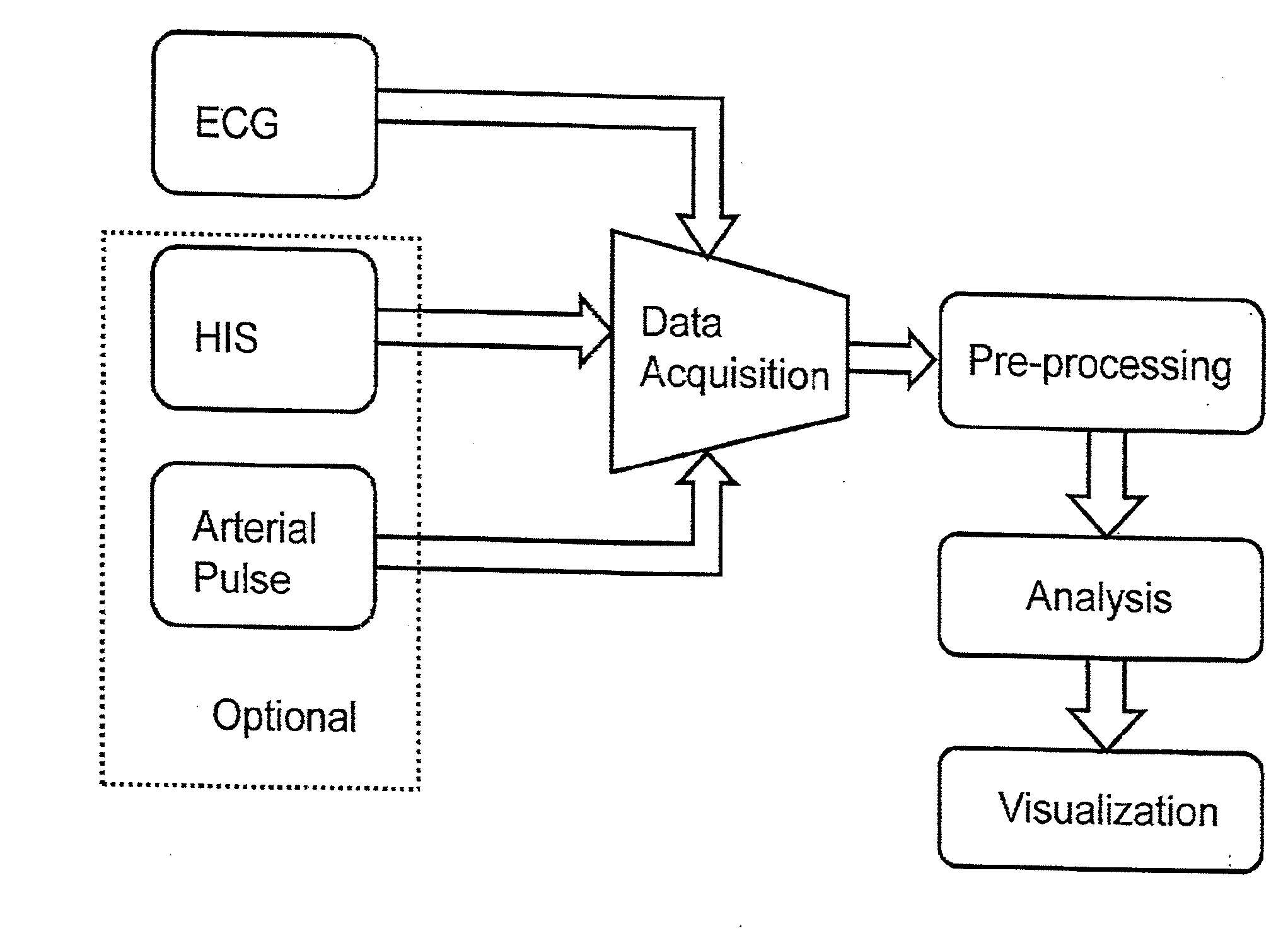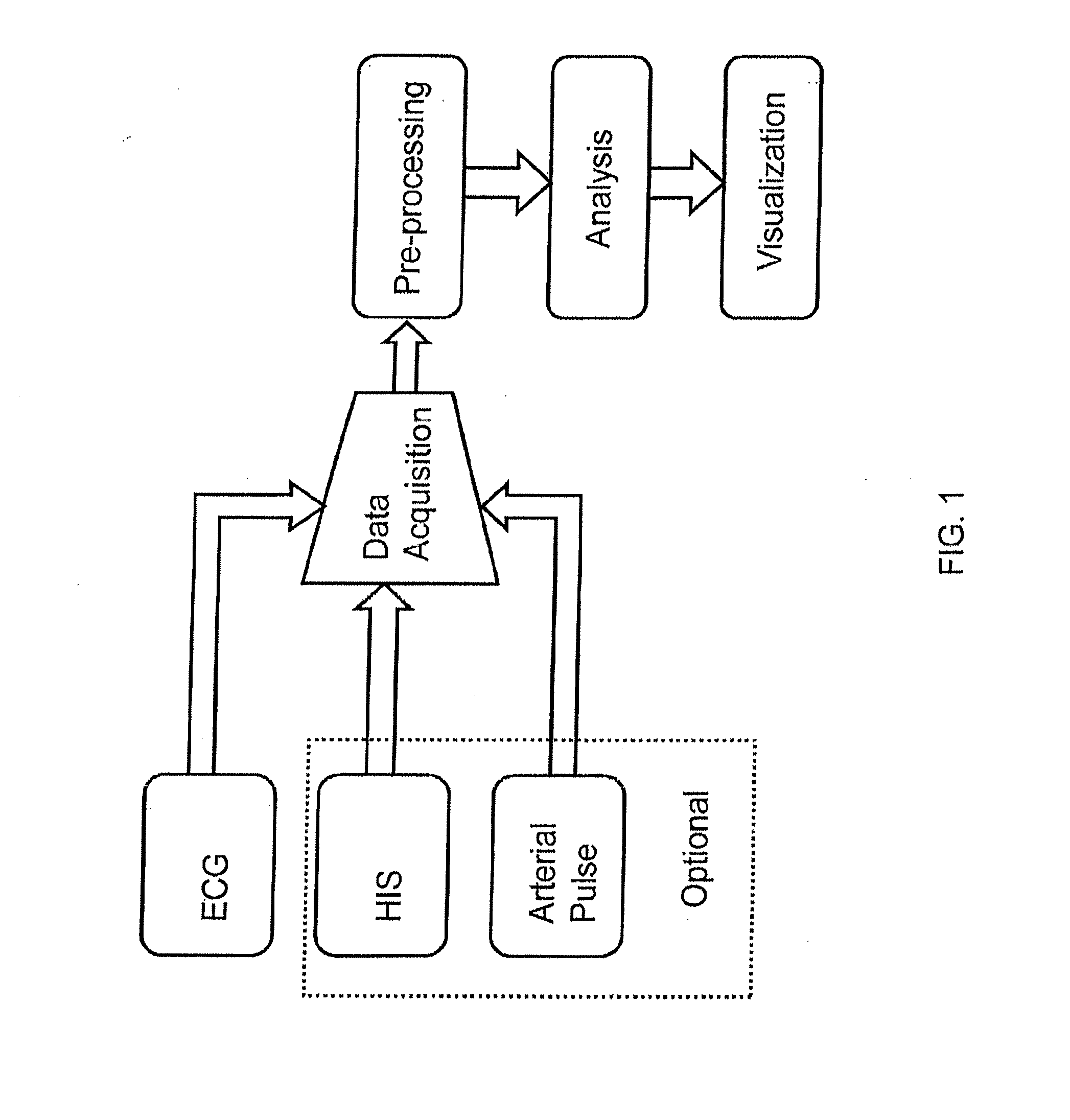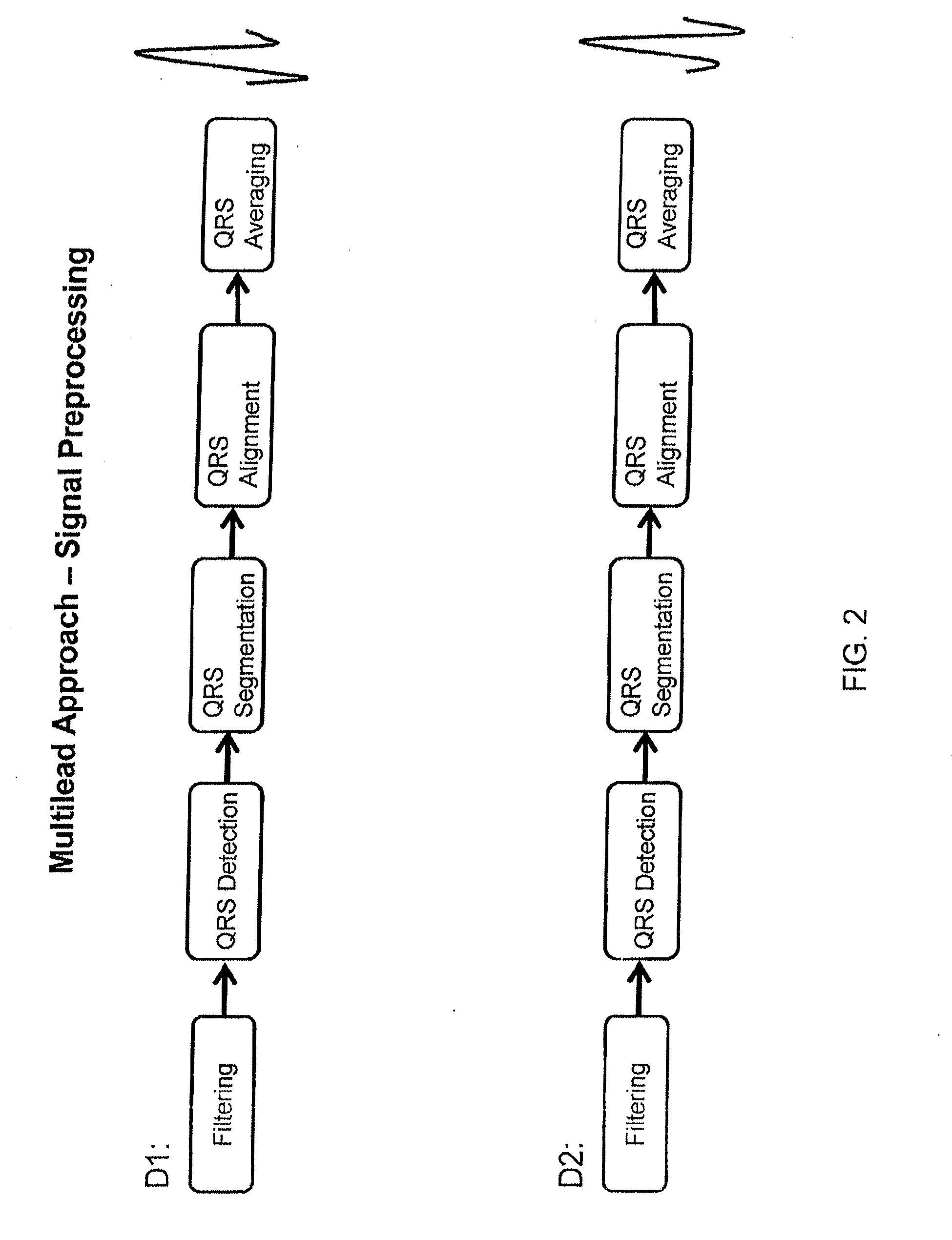Naturally occurring left bundle
branch block (LBBB) also deteriorates
ventricular function by creating, in many instances, an even worse type of ventricular asynchrony than RV apex pacing.
Due to the high expense, complexity and risk of BVP, it has not been widely utilized to prevent the IEA that is created by RV apex pacing in pacemaker patients that are not otherwise indicated for BVP.
Outcomes information, even though critical to understanding the actual clinical benefit of a therapy has not provided any information about the actual success of CRT in correcting the underlying problem for a given patient, it only provides the
likely outcome for a
population of patients.
Hemodynamic information, although accurate in measuring the mechanical effects of CRT and XSTIM when they attempt to correct the underlying electrical asynchrony problem, is only a surrogate variable, since it does not provide corroborative information about the effectiveness of CRT or XSTIM in correcting the electrical asynchrony, currently thought to be the core problem creating the asynchrony.
Therefore, at this stage, previously developed techniques do not provide the prescribing physician or the implanting physician with any method to determine if the patient actually has asynchrony that could be corrected by implanting a CRT device.
Additionally, previously developed techniques do not provide the implanting physician with any simple technique to determine whether the site chosen for stimulation is either correcting the electrical and mechanical asynchrony, as should be the case after a CRT
implant, or not creating electrical and mechanical asynchrony during pacing after the implantation of a right ventricula, and / or a CRT pacing device.
Further, previously developed techniques do not provide the implanting physician with any simple method to evaluate the optimum (from a reduction or avoidance of asynchrony point of view) atrio-ventricular (AV)
delay or interventricular (VV)
delay.
Similarly, after the implantation, previously developed techniques do not provide the follow-up physician any simple method to confirm that the implanted CRT device is working correctly and is correcting the baseline asynchrony that caused the prescription of the device in the first place.
Previously developed techniques only allow the follow-up physician to know that the biventricular pacing (BVP) device is pacing in both chambers and capturing in both, but not whether or not the underlying IEA that caused the prescription of the BVP device has been corrected by the device.
This method, however, does not provide enough information to know if the left
ventricle (LV) is asynchronous, or not, especially when the narrowing of ECG QRS is not marked as it occurs in most cases of CRT.
In cases of patients with a narrow QRS in need of a pacemaker, pacing will most likely widen the QRS, since any artificial stimulation will be worse than normal conduction, unless a method like XSTIM is used.
The reason IEA is not checked is that there are no simple easy to use, quick and inexpensive methods that allow for its evaluation.
Ultrasound methods are highly inaccurate and imprecise due to the twisting motion of the
heart wall during contraction (which only complex set ups account for, since different
layers of tissue will move at different times, making the interpretation of asynchrony measurements very difficult).
They are very expensive and
time consuming and out of the realm of what the referring, follow-up and implanting physicians can have reasonable access to.
Lack of knowledge and understanding of this factors has led to the proliferation of inaccurate methods for assessing asynchrony based on echocardiography and Doppler
Tissue imaging with the consequence that none has been adopted as a clinical standard, leaving the implanting and follow up physician without a tool to use in the assessment of whether the therapeutic level of asynchrony prescribed has been reached or not.
Furthermore, if during the implantation of a device the presence of echocardiographic recording systems is added, complexity is also added to the procedure, which increases the surgical time and thereby increases the cost of the procedure and the
risk of infection.
Finally, given that the
root cause of the degradation that is being corrected is the
electrical conduction system of the heart, direct measurements of the effect of the therapy on that conduction is the best strategy for determining the success of the therapy, and not the measurement of secondary surrogate mechanical variables that them, themselves are very prone to measurement errors and miss-interpretation of their meaning.
Furthermore, it is perfectly conceivable that subgroups inside the previously referred to subgroup could be worsened by the therapy since electrical stimulation could either be worsening electrical asynchrony in those who despite showing LBBB didn't have significant IEA or those whose lead position is such that it ends up worsening IEA from its
baseline level.
 Login to View More
Login to View More  Login to View More
Login to View More 


